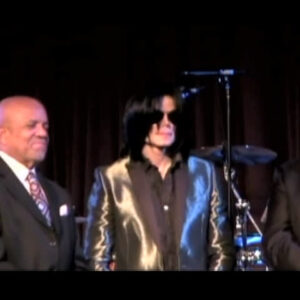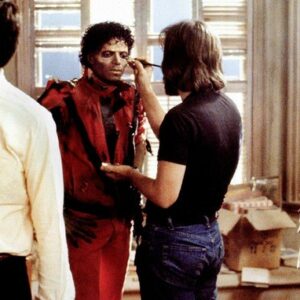Darren Aronofsky’s Mother! is one of the most polarizing films of recent years, an unsettling psychological thriller that leaves audiences grappling with questions long after the credits roll. Starring Jennifer Lawrence, the film plunges viewers into a disturbing, claustrophobic environment where tension, fear, and mystery intensify with every scene. The narrative of Mother! itself is a complex, allegorical reflection on creation, destruction, and human nature. But beyond its symbolic storytelling, what truly amplifies the psychological horror of Mother! is its masterful use of sound and music.
Sound, in Mother!, is not merely an accompaniment to the visuals; it is an integral part of the storytelling. From the faintest creaks of the house to the unsettling ambient score, the sonic elements drive the tension forward and evoke visceral reactions from the audience. Jóhann Jóhannsson, the Icelandic composer renowned for his minimalist yet emotionally resonant scores, created a soundscape that blurs the line between music and noise. Through this technique, he captures the growing unease that defines the film, making sound not just a background component but a central character in the unfolding drama.
The Importance of Sound in Storytelling
In cinema, sound design plays an essential role in shaping a film’s emotional atmosphere. While visuals provide the tangible elements of a scene, sound adds the invisible layer that can elevate a narrative from mere storytelling to a full-body experience. Aronofsky, known for his psychological intensity in films like Black Swan and Requiem for a Dream, understands the power of sound. In Mother!, he pushes the boundaries of what music and sound can achieve.
The entire film is built on an ever-growing sense of dread, and much of that comes from the way sound is manipulated. The house, where almost all the action takes place, feels like a living organism. The walls creak, floors groan, and even the air seems charged with an undercurrent of menace. Aronofsky and Jóhannsson masterfully use these sounds to create a claustrophobic feeling of entrapment, as if the house itself is conspiring against its inhabitants.
For instance, the absence of a traditional score allows the viewer to focus on the natural sounds of the environment, heightening the film’s unsettling mood. The quiet moments, punctuated by seemingly mundane sounds like footsteps or doors closing, become nerve-wracking. Each sound cue in Mother! is purposeful, designed to manipulate the viewer’s emotions, pulling them deeper into the psychological abyss.
The Composer’s Approach
Jóhann Jóhannsson’s approach to the Mother! soundtrack was anything but conventional. Known for his ambient and often minimalist compositions, Jóhannsson’s work in Mother! is a prime example of how soundscapes can evoke powerful emotional responses. Jóhannsson had worked with Aronofsky before, and their collaboration on this film was an exploration of the boundaries of music and noise.
Interestingly, Jóhannsson’s score for Mother! is not a traditional one. Instead of using sweeping orchestral pieces or melodic themes, he focused on creating a soundscape that blends seamlessly with the film’s unsettling atmosphere. In many scenes, the line between diegetic sound (sound that comes from the world of the film) and non-diegetic sound (music and sound effects that are external to the narrative) is intentionally blurred. This creates a disorienting effect for the audience, making it difficult to distinguish where the sound is coming from and adding to the film’s sense of chaos.
Jóhannsson’s use of minimalist techniques—such as long, sustained tones, subtle drones, and layered ambient sounds—creates a tension that is almost unbearable at times. His composition doesn’t lead the audience to specific emotions but instead evokes a sense of unease and discomfort that mirrors the film’s themes. By stripping the score of traditional melodies and instead focusing on texture and atmosphere, Jóhannsson manages to make the music an essential, if invisible, force in the film.
Key Moments in Mother! Enhanced by Sound
Several key moments in Mother! demonstrate just how vital the sound design is in enhancing the film’s storytelling. In these scenes, the sound isn’t just an enhancement; it is what drives the emotional and psychological intensity.
One such moment is the film’s harrowing climax. As the narrative reaches its fever pitch, the sound becomes almost unbearable in its intensity. Jóhannsson uses layers of dissonant tones and grinding noises that seem to assault the senses, mirroring the chaos unfolding on-screen. The use of silence in the moments following this sonic barrage only heightens the sense of devastation and hopelessness that defines the film’s conclusion.
Another pivotal moment is when Lawrence’s character begins to realize the sinister nature of the guests who invade her home. In these scenes, the absence of music creates a stark contrast to the growing tension. Instead, the sounds of the house—the creaking, the footsteps, the whispers—become amplified, putting the audience in a state of heightened alert. The sound design in these moments is almost subconscious, working on a level that affects the viewer’s emotions without them even realizing it.
Jóhannsson’s ability to use silence as a tool is also on full display in Mother!. In a film where so much tension is built through sound, the sudden absence of it can be just as impactful. For example, in scenes where Lawrence’s character is left alone in the house, the silence becomes oppressive. It is as if the absence of sound amplifies the isolation and dread she feels, pulling the audience into her psychological state.
The Broader Impact of Sound Design in Jennifer Lawrence’s Films
Jennifer Lawrence’s career is marked by a series of films where music and sound design have played critical roles in enhancing her performances. In The Hunger Games series, for example, the use of sound is crucial in building the world of Panem and illustrating Katniss Everdeen’s journey from reluctant hero to revolutionary leader. The score, composed by James Newton Howard, uses a mix of orchestral and folk elements to create a sound that is both epic and intimate. Lawrence’s portrayal of Katniss is amplified by the way the music underscores her character’s emotional struggles, from moments of quiet reflection to the chaotic battles of the Hunger Games.
Similarly, in Silver Linings Playbook, the soundtrack plays a pivotal role in shaping the emotional tone of the film. The music choices, ranging from classical to contemporary, mirror the emotional ups and downs of Lawrence’s character, Tiffany, and her relationship with Bradley Cooper’s character, Pat. The soundtrack becomes a reflection of the characters’ inner turmoil, and Lawrence’s performance is enriched by the way the music complements her emotional range.
In both these films, and others like American Hustle and Joy, sound and music serve as invisible actors, enhancing Lawrence’s performances by providing emotional cues for the audience. Whether it’s the sweeping orchestral score of The Hunger Games or the quirky, eclectic soundtrack of Silver Linings Playbook, the music in Lawrence’s films consistently elevates the narrative and deepens the audience’s connection to her characters.
Conclusion: The Power of Sound and Music in Cinema
In Mother!, the power of sound and music is undeniable. Jóhann Jóhannsson’s experimental score, coupled with Aronofsky’s meticulous sound design, creates a sonic landscape that is as crucial to the film’s emotional impact as the visuals. The sounds of the house, the use of silence, and the minimalist approach to music all work together to create a sense of dread and unease that permeates every frame of the film.
But beyond Mother!, the broader impact of sound design in cinema—and specifically in Jennifer Lawrence’s films—cannot be overstated. From the epic scores of The Hunger Games to the emotionally charged soundtracks of Silver Linings Playbook, sound and music have played a critical role in shaping Lawrence’s performances and enhancing the films she stars in.
Ultimately, sound and music are integral tools in the filmmaker’s arsenal, capable of elevating a film from mere entertainment to a deeply emotional, immersive experience. In Mother!, and indeed in much of Jennifer Lawrence’s filmography, the power of sound proves to be as significant as the visuals in shaping the narrative and connecting with the audience.





